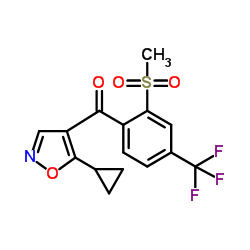Role of sorption and degradation in the herbicidal function of isoxaflutole.
Gerald K Sims, Sarah Taylor-Lovell, Gabe Tarr, Shawn Maskel
Index: Pest Manag. Sci. 65(7) , 805-10, (2009)
Full Text: HTML
Abstract
The fate of isoxaflutole (IFT) in soil is closely related to soil sorption. Sorption and transformation of IFT were investigated in laboratory incubations with four soils, and these results were used to interpret greenhouse studies using IFT to control several weed species.Degradation proceeded by previously observed pathways to form diketonitrile (DKN) and benzoic acid (BA) derivatives, as well as traces of unidentified products. Over the course of the incubation, DKN was the dominant active form of the herbicide present in the experimental system, and was thus critical to the soil activity of the herbicide for weed control.Control of most weed species appeared to be a function of both sorption and biodegradation of DKN, with greatest weed control being observed in soils in which a significant portion of the DKN that was formed persisted and remained bioavailable over the course of the incubation.(c) 2009 Society of Chemical Industry.
Related Compounds
| Structure | Name/CAS No. | Molecular Formula | Articles |
|---|---|---|---|
 |
Isoxaflutole
CAS:141112-29-0 |
C15H12F3NO4S |
|
Soil persistence of 4-HPPD-inhibitors in different soil type...
2002-01-01 [Meded. Rijksuniv. Gent. Fak. Landbouwkd. Toegep. Biol. Wet. 67(3) , 383-91, (2002)] |
|
Influence of rainfall distribution on simulations of atrazin...
2007-07-11 [J. Agric. Food Chem. 55(14) , 5399-407, (2007)] |
|
Reaction pathways of the diketonitrile degradate of isoxaflu...
2007-03-07 [J. Agric. Food Chem. 55(5) , 1893-9, (2007)] |
|
The effect of five forage species on transport and transform...
2003-01-01 [J. Environ. Qual. 32(6) , 1992-2000, (2003)] |
|
Temperature and water pressure head effects on the degradati...
2008-12-01 [Environ. Pollut. 156(3) , 678-88, (2008)] |